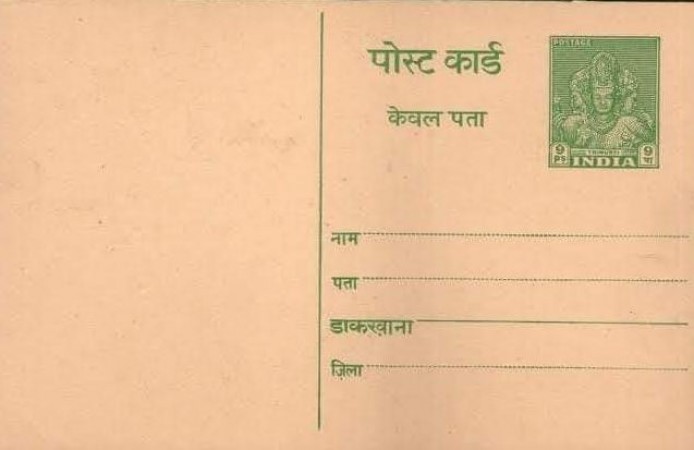
New Delhi: The history of postcards in India dates back to July 1, 1879, when the first postcards were introduced in the country. These postcards were designed and printed by Messrs Thomas De La Rue & Co. of London. The initial issuance included two types of postcards: the "Quarter Anna" card for domestic use and the "1½ Annas" card for countries affiliated with the Universal Postal Union.
The Quarter Anna card featured the inscription "East India Post Card" with the coat-of-arms of Great Britain in between. It had a red-brown stamp featuring Queen Victoria's diademed head in the upper right corner. On the other hand, the foreign postcard displayed the inscription "Universal Postal Union" in English and French at the top. The bilingual inscriptions of "British India" and "Post Card" were placed below the top line, separated by the British coat-of-arms. This card had a blue stamp in the upper right corner. Both cards had the legend "the address only to be written on this side" on the front.
Over time, the postcards in India underwent various changes. In 1899, the word "EAST" was removed from the inscription, and it became 'INDIA POST CARD'. In 1911, special postcards for official use were issued to commemorate the Coronation of King George V Durbar held in Delhi. These cards featured the printed inscription of "POST CARD" but did not bear the stamp imprint. They had the Crown and 'GRI' monograms embossed in gold, along with the word 'Delhi' and the emblems of various provinces embossed in different colors.
Following India's independence, the postcards went through further transformations. On December 7, 1949, the first postcard with the new stamp design of TRIMURTI in bright green was issued. In 1950, Local Delivery postcards with a reduced postage rate were introduced, featuring a stamp design in chocolate color based on the Konark Horse sculpture. On October 2, 1951, a series of three picture postcards depicting Mahatma Gandhi were released, showcasing him holding a child, spinning, and with Kasturba. Another series of three postcards featuring Gandhi spinning, Gandhi at Sabarmati, and a bust of Gandhi were issued on October 2, 1969, to commemorate the Gandhi Centenary.
The postcard has remained a popular means of communication among the common people in India, especially in rural areas. It continues to enjoy immense popularity, with more than 2.1 billion postcards crisscrossing the vast country, fostering a fraternal bond among the people. Throughout its history, the postcard has served as a simple and accessible way for individuals to connect and share their thoughts, experiences, and sentiments with one another.
BREAKING! Fire breaks out in Bhopal-Delhi Vande Bharat Express
Unveiling the True Essence of Patriotism: Major Signs You Should Know
Boryeong Mud Festival: Discovering South Korea's Celebration of Mud